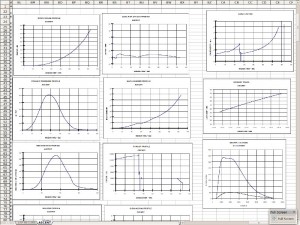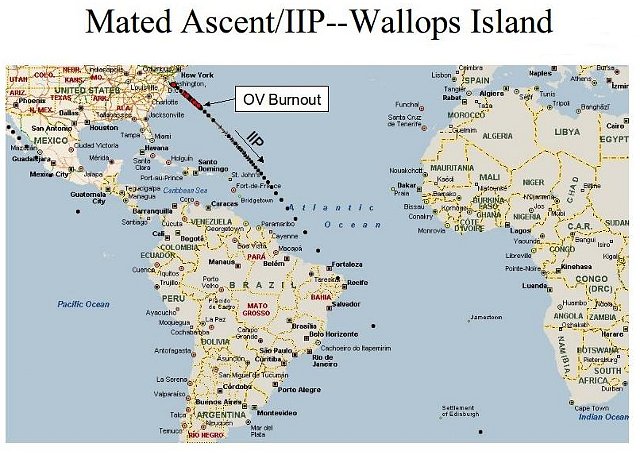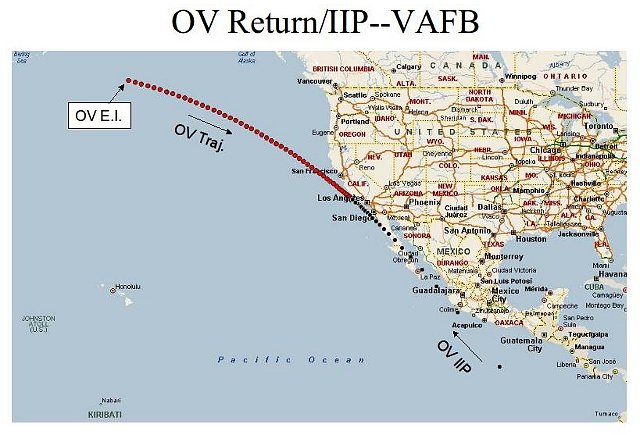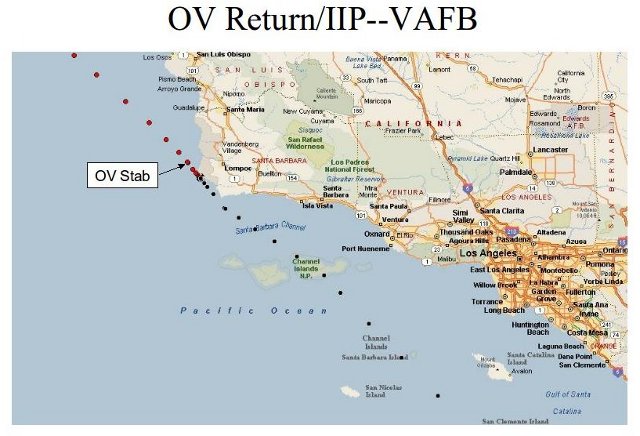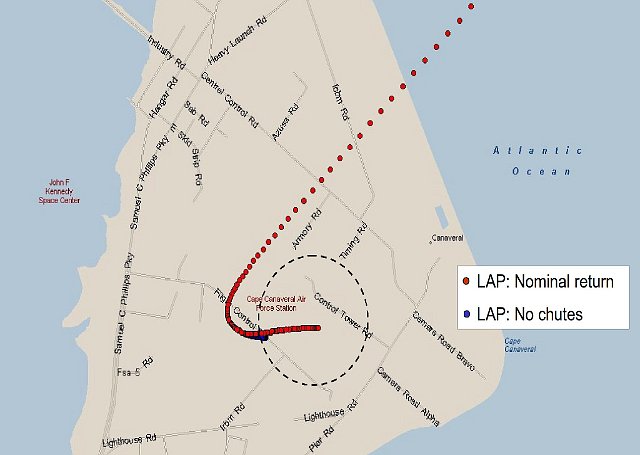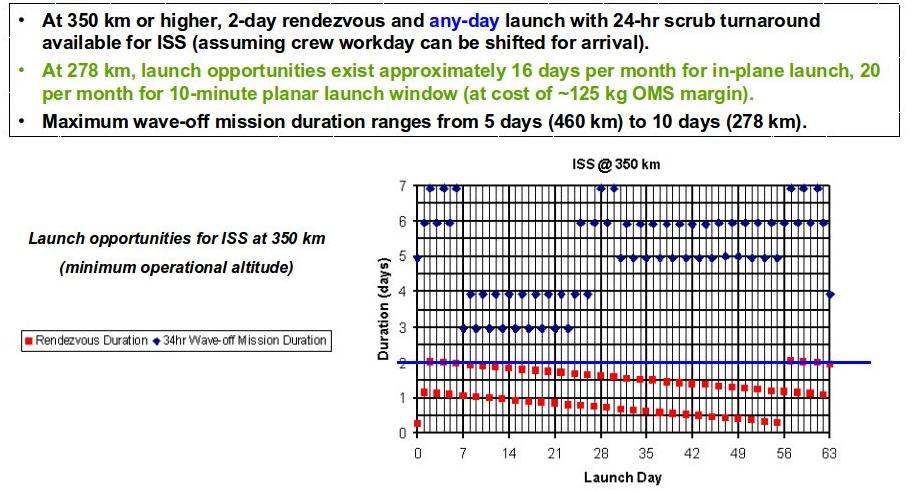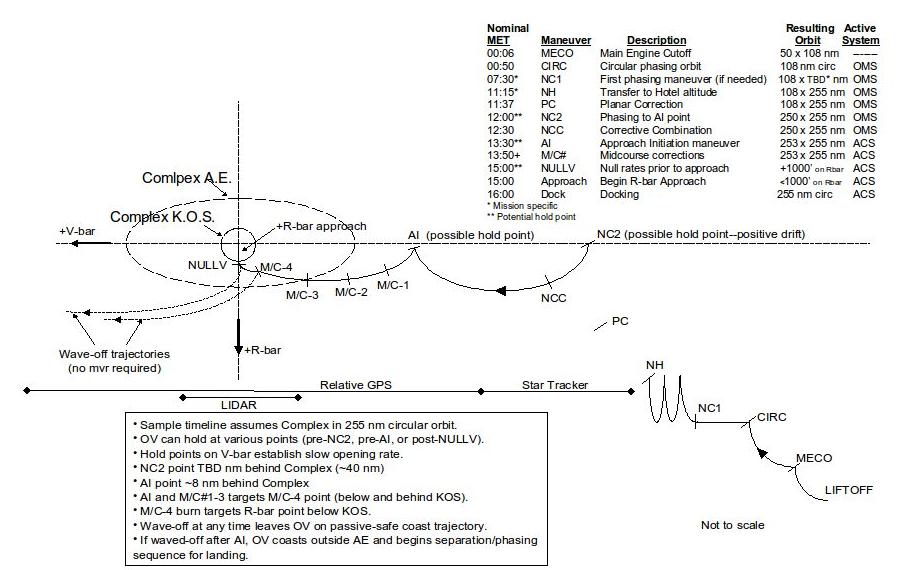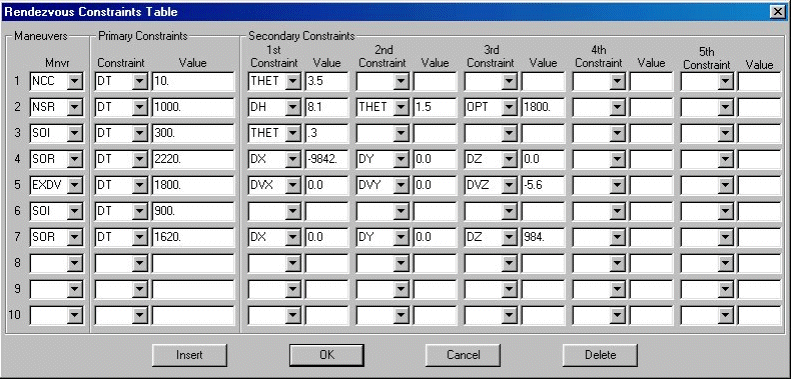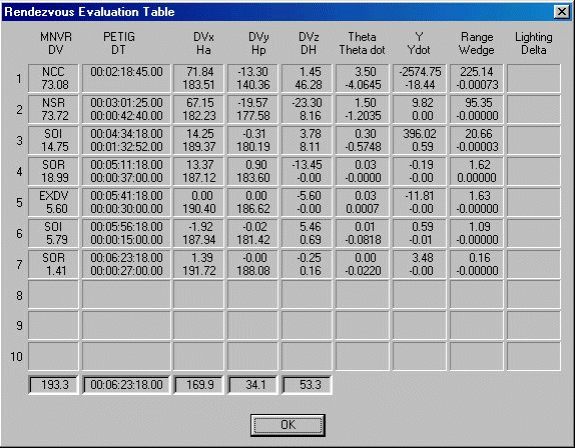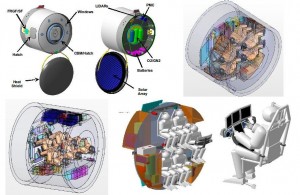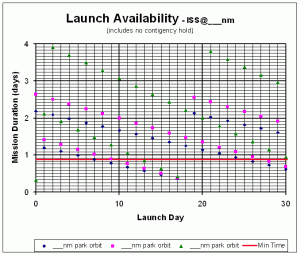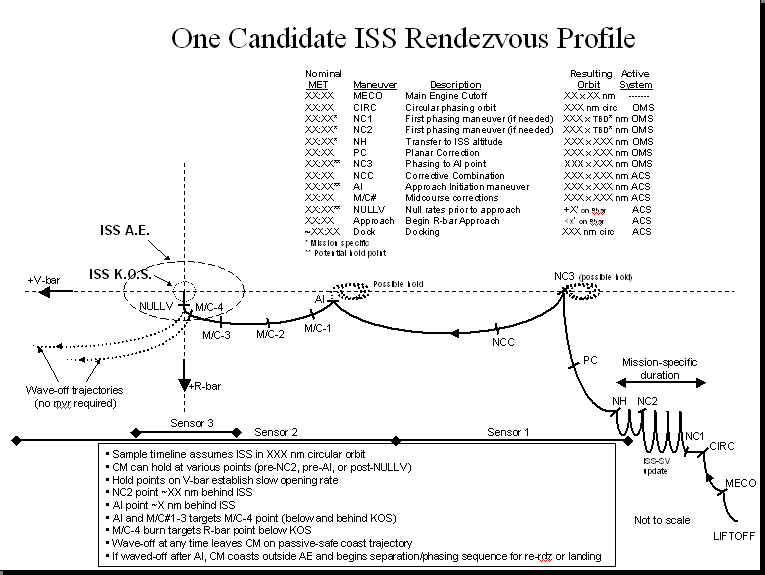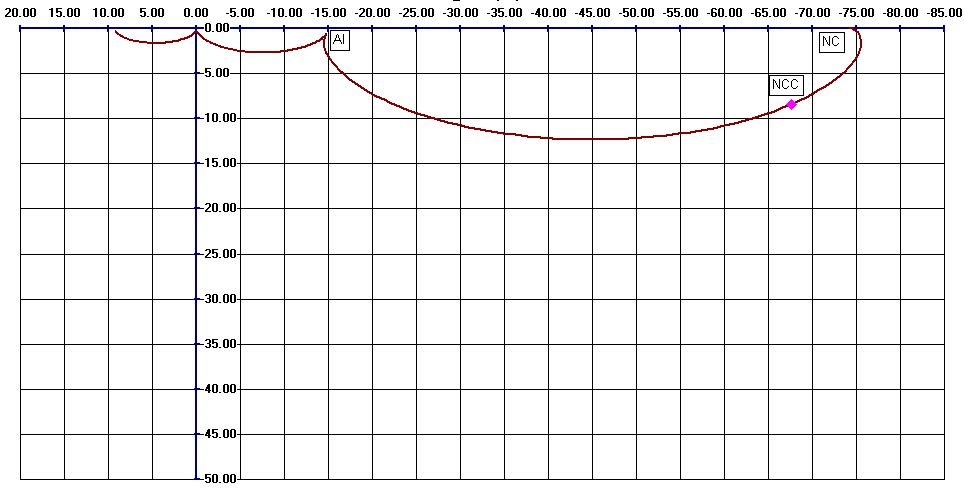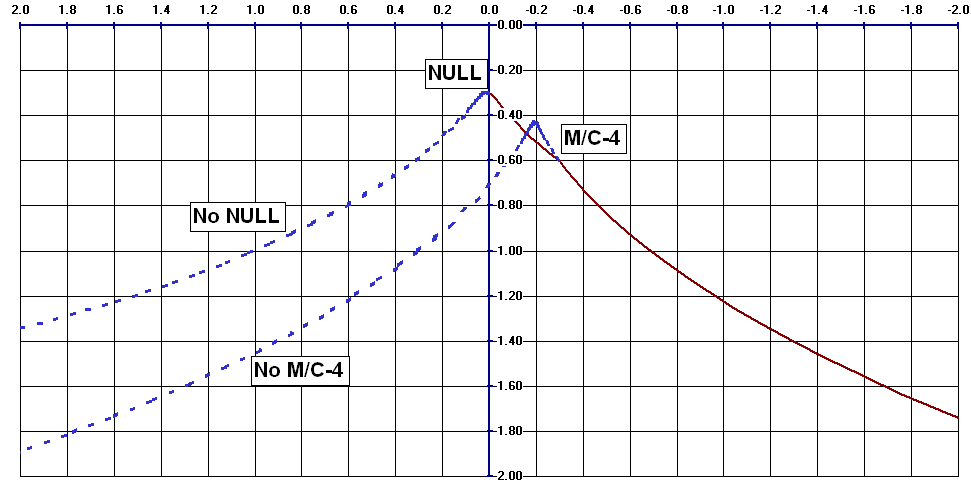Kistler/RpK/COTS
Most of my work as a private consultant was for Kistler Aerospace. They were so impressed with my contributions that, despite being in Chapter 11 bankruptcy recovery, I was the only new person they were authorized to bring on-board as a full-time employee (Flight Dynamics Manager). Unfortunately, that position lasted only one year before Kistler laid off their entire workforce and closed their doors (see Rocketplane-Kistler, below).
At Kistler, I gradually accumulated many responsibilities. Originally, I was brought in only to run 3-D performance analysis, using a custom program called TAP, the Trajectory Analysis Program. This program was developed by another Kistler contracter and performs very similar functions to POST, an industry-standard performance tool.
As Kistler’s potential customer base expanded beyond the LEO commercial satellite market, however, I found new areas in which I could contribute, and lobbied for increased responsibilities. Kistler management awarded we with several new areas of responsibility:
- I performed all of Kistler’s 3D performance analysis for various launch and entry vehicle configurations, launch/landing sites, and launch/entry conditions.
- I was lead technical writer on some of their proposals, including the Air Force’s Hybrid Launch Vehicle, for which our technical proposal received Highest Marks.
- I was the lead analyst for using the Kistler K-1 launch vehicle for lunar missions, utilizing the Lunar Transportation System’s lunar landers and refueling vehicles.
- I performed Impact Point Prediction analysis for launching the K-1 from different launch sites around the country (and overseas) and performed trajectory optimization and analysis for those missions.
- I performed preliminary design for next-generation Kistler launch vehicles and designed system architectures for heavy-lift, lunar, and interplanetary missions, including Lagrange point analysis and in-situ resource utilization.
- Most importantly, Kistler began investigating LEO rendezvous missions. Due to my work in rendezvous and proximity operations at NASA and Boeing, I was the lead analyst for all related activity. Drawing on my manned spaceflight experience, I also was a key member of Kistler’s team that investigated upgrading the K-1 for manned flight. I developed rendezvous profiles, avionics and power requirements, and provided launch window analysis, sensor selection, and ACS design requirements. I was also responsible for assuring the rendezvous vehicle’s compliance with all of NASA’s system and operational requirements as specified in the ISS Visiting Vehicle IDD and SIRD.
My analyses and presentations at NASA facilities resulted in Kistler winning several contracts from NASA, totaling several hundred million dollars.
Kistler management was so impressed with my work that I was offered the position of Systems Engineering Manager. While I was considering the opportunity Kistler’s primary shareholder, Bay Harbour Management, announced that they were shutting down Kistler operations.
Rocketplane-Kistler and COTS: Sadly, Bay Harbour Management, decided to shut down operations just prior to NASA’s competition to resupply the International Space Station–a project on which I had been working for several years. When NASA announced the competition, a core team of five engineers was selected to bid on the contract, known as COTS (Commercial Orbital Transportation System). I was put in charge of that team’s technical proposal effort to hire and reward.
Shortly into the effort, Kistler was acquired by Rocketplane, Ltd. in Oklahoma, and a new company, Rocketplane-Kistler (RpK) was formed. I was the primary technical analyst for that proposal effort, which lasted eight months. I was promoted to lead the Systems Engineering effort in addition to my existing duties and Mission Operations Manager. During the proposal effort, I:
- helped develop new layouts for the crew module
- designed an abort system that met NASA’s specification and could be fitted to the existing K-1 preliminary design
- generated all performance data for the NASA Design Reference Missions
- performed launch window analysis and rendezvous mission timeline analysis for every-day launch opportunities
- designed rendezvous mission profiles that met NASA’s requirements while still maximizing K-1 performance and meeting cross-range landing criteria.
- presented all performance, rendezvous, abort, crew cabin, thermal analysis, entry analysis, and launch window data to NASA in numerous meetings.
The result of this effort: RpK was one of two COTS winners, awarded a $207 million dollar contract. I was offered the opportunity to continue my responsibilities as an RpK manager, but declined in order to remain an independent consultant.
